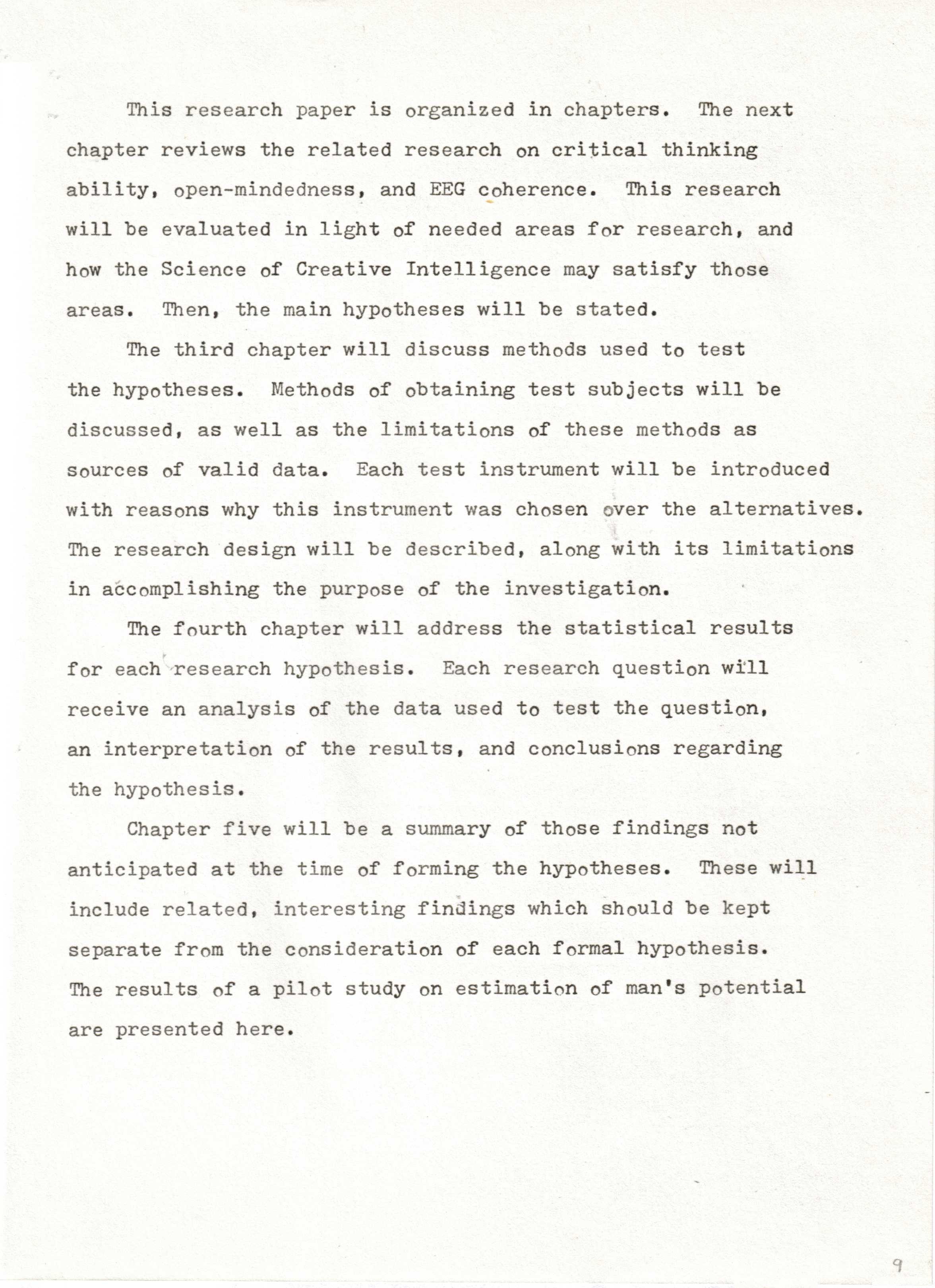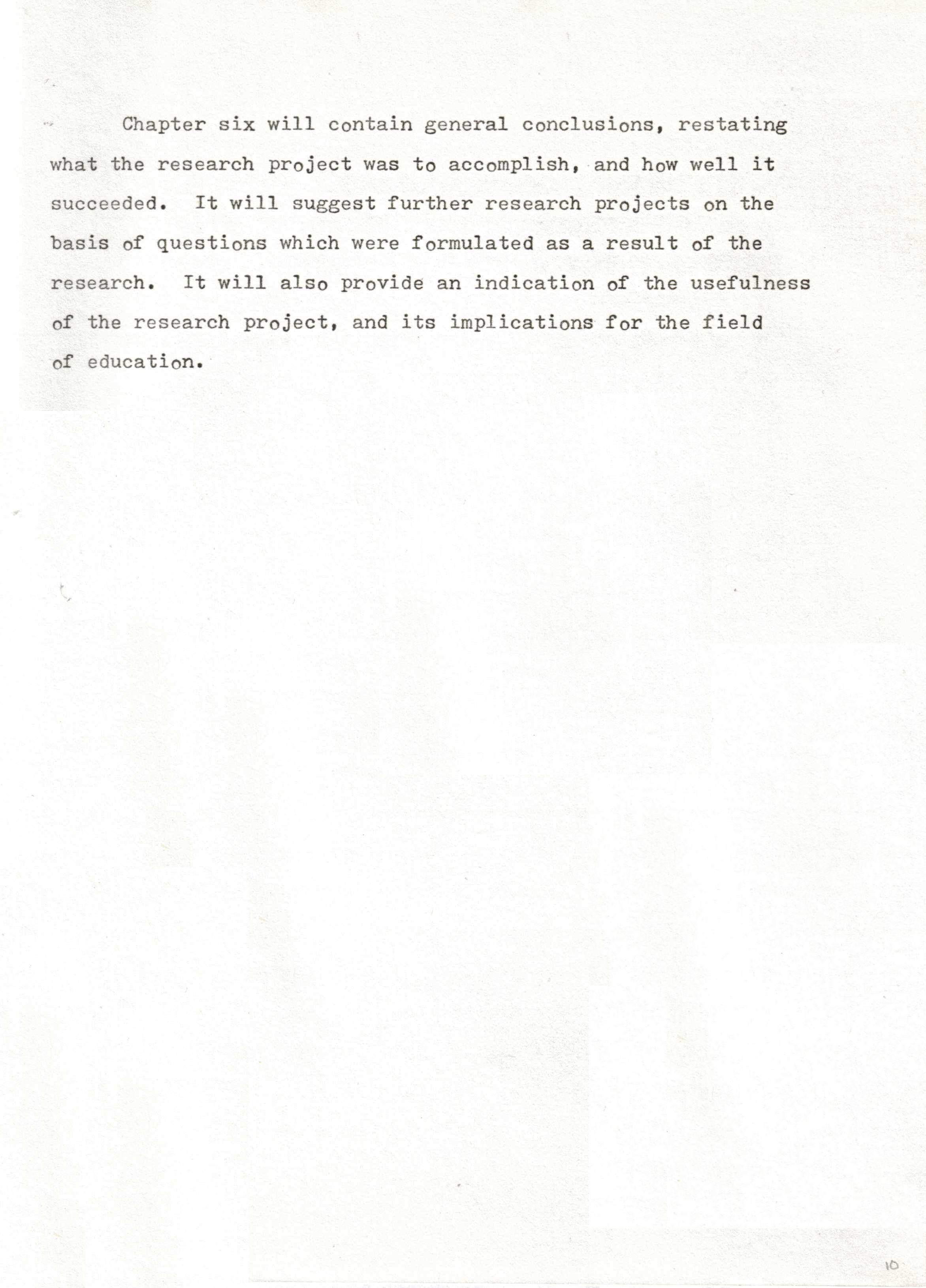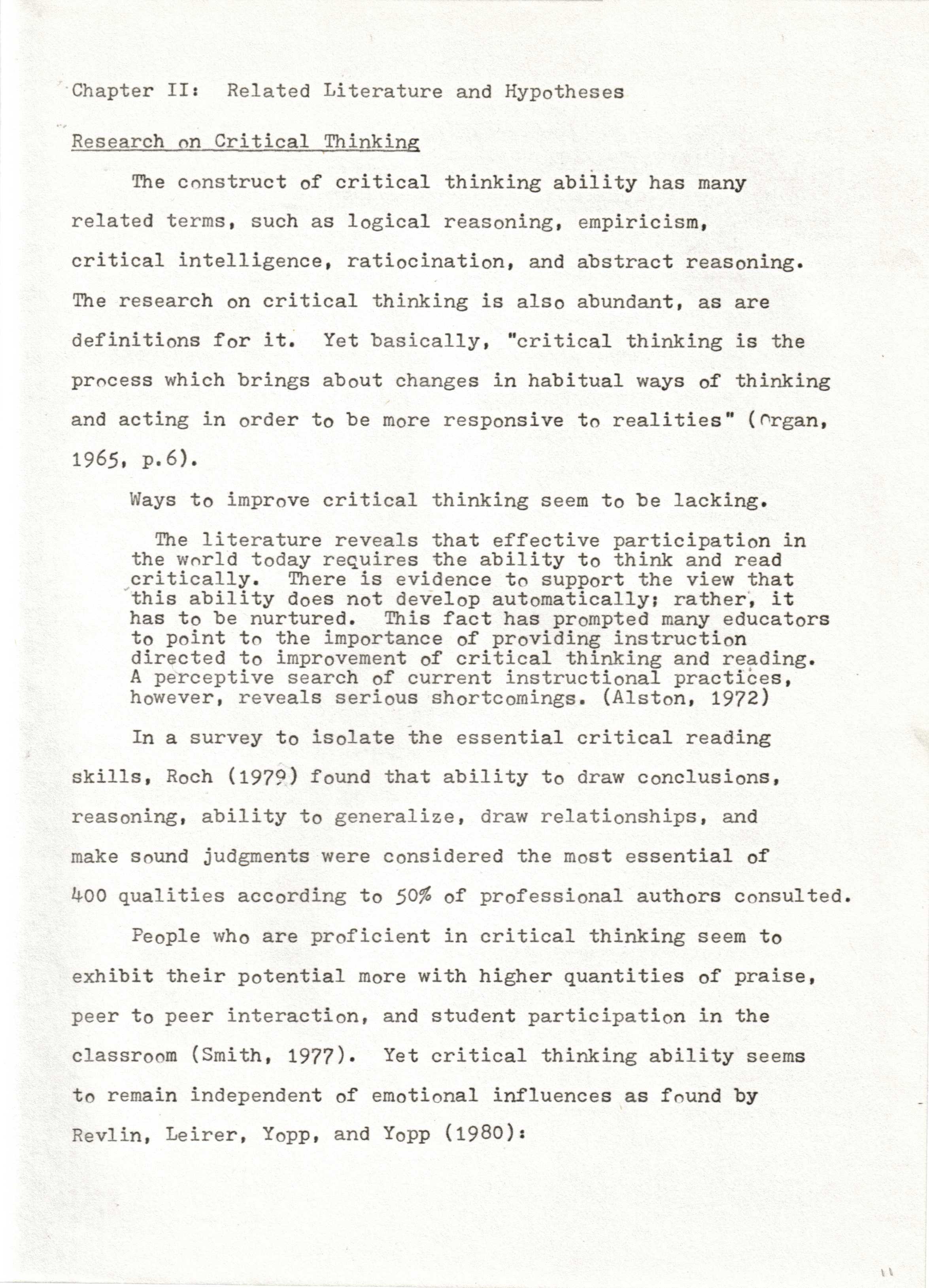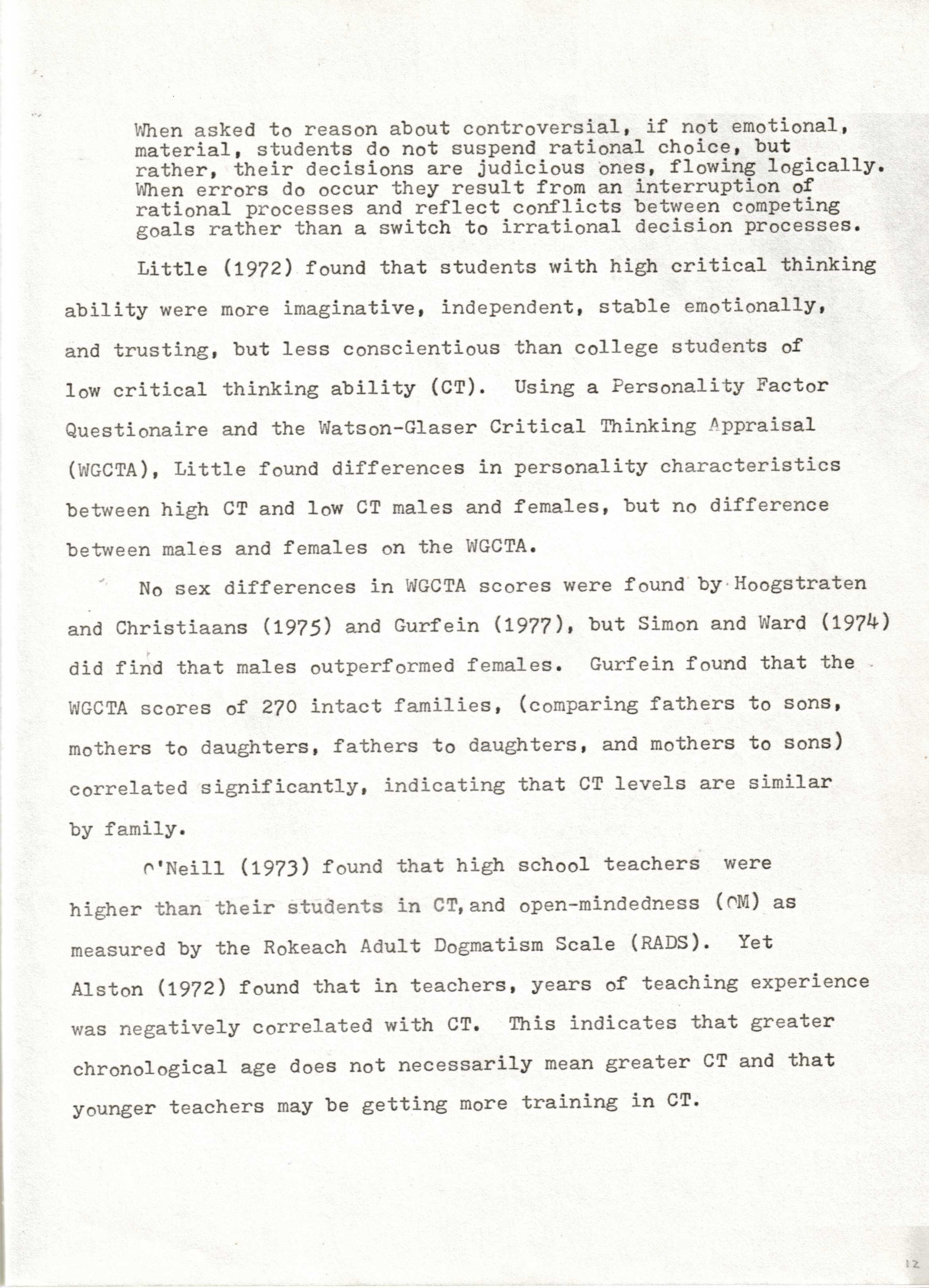
ctomeegmiu08.jpg
|
rules together foster the purest unfoldment of knowledge...Each
step of deduction must be performed explicitly and without
hidden assumptions, that is, fully consciously“ (MIU Catalogue,
1981). Yet the TM—Sidhi program also includes things which
may strike most people as illogical--the development of
extraordinary human abilities such as levitation. ”The TM-Sidhi
technique of 'flying' is an extraordinary new technology for
the generation of coherence" (MIU Catalogue, 1981). A further consideration to be investigated is to assess
the critical thinking ability with a view towards “assessing
the likelihood of gullible thinking patterns in MIU students.
This study should serve as a first step in isolating
the effect of the TM program as a variable in developing
critical thinking and open—mindedness. Inferences from the
data would pertain only to the effect of the MIU curriculum and educational
environment as a whole. Generalizations to
other student populations would be limited because students
who elect to attend MIU, a unique university. may have
factors in common which might influence their measures in
critical thinking. open—mindedness, and EEG coherence. |

ctomeegmiu09.jpg
|
This research paper is organized in chapters.
The next chapter reviews the related research on critical thinking ability,
open-mindedness, and EEG coherence. This research will be evaluated in light of
needed areas for research, and how the Science of Creative Intelligence may
satisfy these areas. Then, the main hypotheses will be stated.
The third chapter will discuss methods used to test
the hypotheses. Methods of obtaining test subjects will be discussed, as well as
the limitations of these methods as sources of valid data. Each test instrument
will be introduced with reasons why this instrument was chosen over the
alternatives. The research design will be described, along with its limitations
in accomplishing the purpose of the investigation.
The fourth chapter will address the statistical
results for each research hypothesis. Each research question will receive an
analysis of the data used to test the question, an interpretation of' the
results, and conclusions regarding the hypothesis.
Chapter five will be a summary of those findings not
anticipated at the time of forming the hypotheses. These will include related,
interesting findings which should be kept separate from the consideration of
each formal hypothesis. The results of a pilot study an estimation of
man's potential are presented here. |

ctomeegmiu10.jpg
|
Chapter six will contain general
conclusions, restating
what the research project was to
accomplish, and how well it
succeeded. It will suggest further research
projects on the
basis of questions which were formulated as
a result of the
research. It will also provide an
indication of the usefulness
of the research project, and its
implications for the field
of education. |

ctomeegmiu11.jpg
|
Chapter II: Related Literature and
HypothesesResearch on Critical Thinking
The construct of critical thinking ability
has many
related terms, such as logical reasoning,
empiricism,
critical intelligence, ratiocination, and
abstract reasoning.
The research on critical thinking is also
abundant. as are
definitions for it. Yet basically,
”critical thinking is the
process which brings about changes in
habitual ways of thinking
and acting in order to be more responsive
to realities” (Organ,
1965, p.6).
Ways to improve critical thinking seem to
be lacking.
-
The literature reveals that effective
participation in
the world today requires the ability to
think and read
critically. There is evidence to support
the view that his ability does not develop
automatically; rather, it
has to be nurtured. This fact has prompted
many educators
to point to the importance of providing
instruction
directed to improvement of critical
thinking and reading.
A perceptive search of current
instructional practices,
however, reveals serious shortcomings.
(Alston. 1972)
In a survey to isolate the essential
critical reading
skills, Roch (1979) found that ability to
draw conclusions,
reasoning, ability to generalize, draw
relationships, and
make sound judgment: were considered the
most essential of 400 qualities according to 50% of
professional authors consulted.
People who are proficient in critical
thinking seem to
exhibit their potential more with higher
quantities of praise,
peer to peer interaction, and student
participation in the
classroom (Smith, 1977). Yet critical
thinking ability seems
to remain independent of emotional
influences as found by
Revlin, Leirer, Yopp, and Yopp (1980): |

ctomeegmiu12.jpg
|
-
When asked to reason about controversial,
if not emotional,
material, students do not suspend rational
choice, but
rather, their decisions are judicious ones,
flowing logically when errors do occur they result from an
interruption of
rational processes and reflect conflicts
between competing
goals rather than a switch to irrational
decision processes.
Little (1972) found that students with high
critical thinking
ability were more imaginative, independent,
stable emotionally,
and trusting, but less conscientious than
college students of
low critical thinking ability (CT). Using a
Personality Factor
Questionnaire and the Watson-Glaser Critical
Thinking Appraisal
(WGCTA), Little found differences in
personality characteristics
between high CT and low CT males and
females, but no difference
between males and females on the WGCTA.
No sex differences in WGCTA scores were
found by Hoogstraten
and Christiaans (1975) and Gurfein (1977),
but Simon and Ward (19?@)
did find that males outperformed females.
Gurfein found that the
WGCTA scores of 270 intact families,
(comparing fathers to sons,
mothers to daughters, fathers to daughters,
and mothers to sons) I
correlated significantly, indicating that
CT levels are similar
by family.
O'Neill (1973) found that high school
teachers were
higher than their students in CT, and
open-mindedness (FM) as
measured by the Rokeach Adult Dogmatism
Scale (RADS). Yet
Alston (1972) found that in teachers, years
of teaching experience
was negatively correlated with CT. This
indicates that greater
chronological age does not necessarily mean
greater CT and that
younger teachers may be getting more
training in CT.
|